
by Spreck | Mar 1, 2025 | Uncategorized
Our campaign to restore Hetch Hetchy is deeply rooted in the sanctity of our national parks, that Hetch Hetchy’s damming was a singular historic insult, a wrong that must be made right.

Hetch Hetchy in 1908 (Photo Matt Ashby Wolfskill)
Recent massive widespread terminations of Rangers are a modern day insult, as we realize our wildly popular national parks cannot handle visitors without adequate staff, especially with the busy summer season approaching.
Let’s restore Hetch Hetchy. And let’s ensure we have enough full-time and seasonal Rangers to protect our lands as we welcome visitors, and let’s treat those Rangers with the dignity they deserve.
Hetch Hetchy’s place in history extends beyond the flooding of the valley. Less than three years after sacrificing the valley to a dam and reservoir for San Francisco, Congress passed the National Park Service Act – legislation that created the National Park Service itself and helped to insure that our parks would be better protected from parochial interests in the future.
So the story of Hetch Hetchy is directly linked to today’s Rangers.
As President Franklin D. Roosevelt explained, “There is nothing so American as our national parks … the fundamental idea behind the parks … is that the country belongs to the people, that it is in process of making for the enrichment of the lives of all of us.”

In a 2005 editorial opinion for the San Francisco Chronicle, Congressman John Garamendi wrote “As we encourage economic growth in California, we should also make a commitment to cherish and sustain our spectacular natural heritage. I can think of no better way than restoring Hetch Hetchy Valley for our children and grandchildren.
Yes, our national parks belong to all of us – a venerable part of our identity that dates back to Abraham Lincoln’s signing of the Yosemite Grant in 1864 “upon the express conditions that the premises shall be held for public use, resort, and recreation [and] shall be inalienable for all time.”
Yet these conditions are threatened today as the Department of Government Efficiency has terminated positions in Yosemite and other parks from thousands of miles away with disregard to staffing needs and job performance. As NBC notes, fewer employees could mean longer entry lines, dirty bathrooms and unsafe conditions for hikers and campers.
There’s hope that DOGE’s chainsaw will be scaled back. We are grateful to the 22 Senators who wrote Secretary Burgum asking him to “immediately reissue seasonal employment offers”. And the Associated Press has reported that at least some employee terminations have in fact been rescinded.
Still, what happens next is uncertain. 2025 will be an interesting year at Yosemite National Park. Will a new Superintendent be hired? Will a reservation system be in place. Will there be staff to open the Tuolumne Meadows Campground? How much public access will be allowed at Hetch Hetchy? Inquiring minds want to know, but we will have to wait.
Let’s get Yosemite and all our parks back to their “normal” operating status. Then let’s return to what needs to be done to restore Hetch Hetchy Valley to its natural splendor

by Spreck | Feb 22, 2025 | Uncategorized
We had a chance to sit down and record a podcast with perhaps our most passionate ally – Robert Hanna, John Muir’s great-great-grandson.
We covered the gamut – water system solutions, San Francisco’s recalcitrance, how the valley would be restored, and what it would mean for future generations. Robert notes we have an opportunity before us right now and he is actively involved in generating support among decisionmakers.
Robert has posted our discussion on Youtube, Spotify and Apple. Please listen, and let us know what you think.

Robert was the interviewer, but that did not stop him from pointing out that the damming of Hetch Hetchy Valley is the greatest historic wrong ever perpetrated in our national parks. He also takes offense, as did the San Francisco Standard, that the City’s “elites” are able to stay in special cabins while ordinary park visitors are not even allowed to camp at Hetch Hetchy..
We both agree that the opportunity for another Yosemite Valley is unparalleled, and there is an opportunity to get it right. With proper planning, we can welcome visitors to a restored valley while avoiding traffic and congestion.
Robert has good political instincts and he is media savvy. And passion seems to run in the blood of the Muir-Hanna family. It’s great to have him on our team.
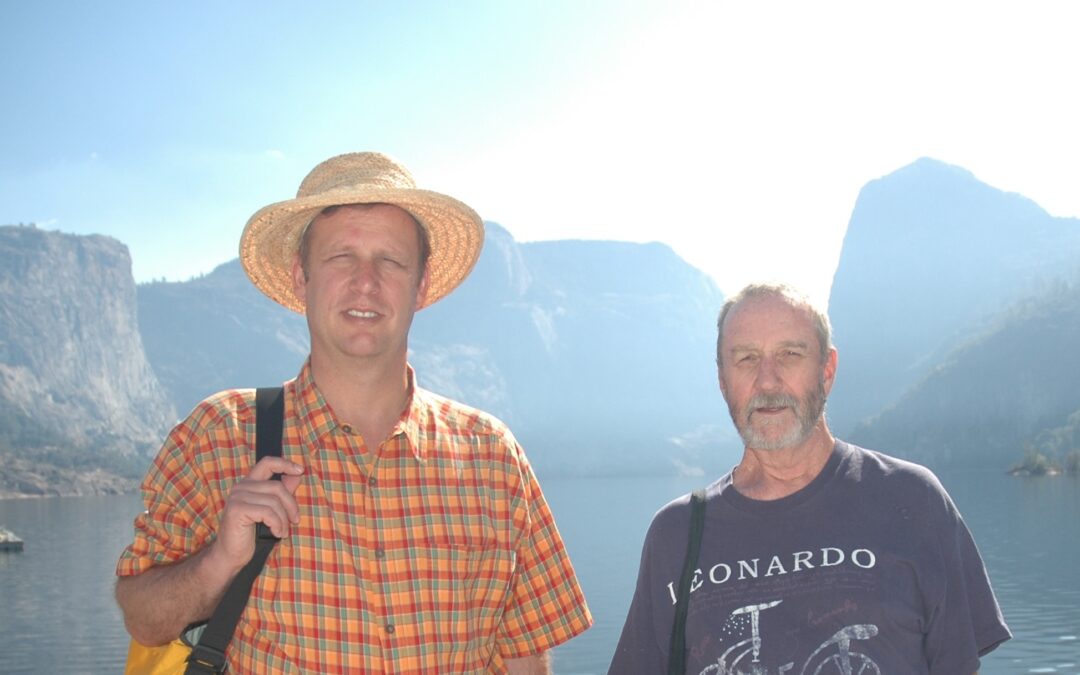
by Spreck | Feb 21, 2025 | Uncategorized
“Retired guy” was George Miller’s way of answering the phone. He and his partners had been successful in the investment business and had agreed to retire when they made a certain amount of money. George boasted he was the only one who kept that promise – after which he moved on to a series of civic and philanthropic ventures.
George “not the Congressman” Miller (how he often introduced himself) passed away in early February. We’ll remember him not only for what he did for Restore Hetch Hetchy but also for the fun and special person that he was – as explained in Carl Nolte’s Sunday column in the San Francisco Chronicle: This little-known man made life a lot better for many Californians.
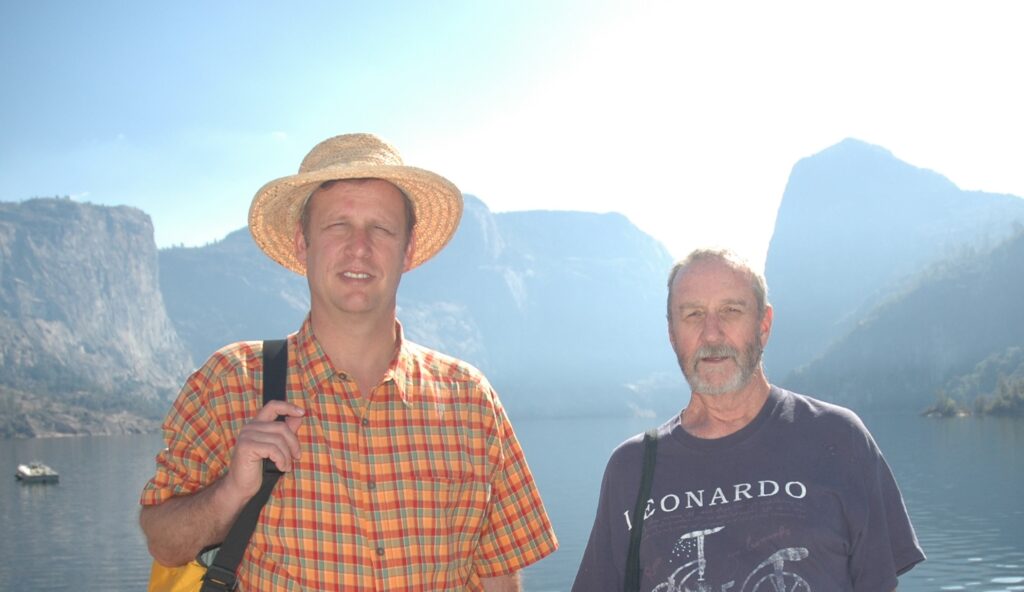
George Miller (right) at Hetch Hetchy in 2004 with Spreck Rosekrans (current RHH Executive Director, then an Analyst at the Environmental Defense Fund) Photo: Tim Connor
We knew George, albeit not well, in 2002 when we hosted Restore Hetch Hetchy’s first real public event – wine, cheese and a slide show at Galen Rowell’s gallery in Emeryville. George had been a supporter of various California River campaigns, and we were pleased when he sent us an RSVP that he’d be attending.
Coincidentally, George, recently retired, had just spent a year at UC Berkeley’s Bancroft Library cataloging the papers of Michael Maurice O’Shaughnessy – San Francisco’s Chief Engineer who built the dam, now named after him, at Hetch Hetchy. How would he feel about eliminating that dam?
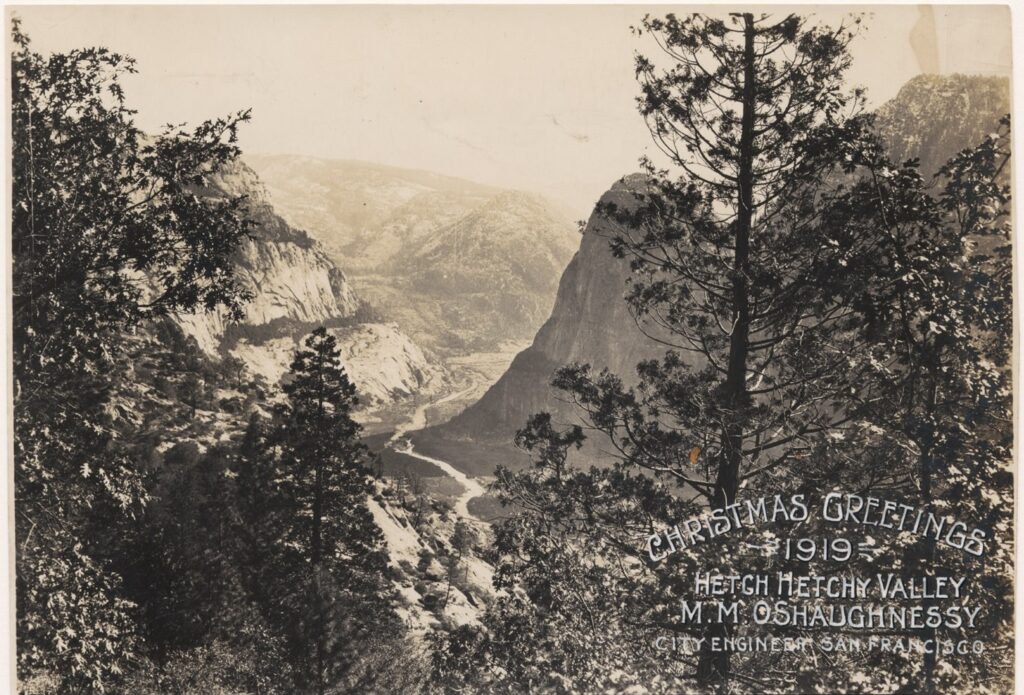
The Christmas Card Michael O’Shaughnessy sent to his wife in 1919 (the dam was completed in 1923). George believed he regretted destroying the valley noting that O’Shaughnessy had told his wife they had spent too much money to turn back.
First of all, how many people take on such a laborious task immediately after retirement? George was proud of his work, although he did say that the sinus infections he got from the collection’s dusty papers almost killed him.
Second of all, how likely would George be to support getting rid of the dam, after he worked so hard to preserve the legacy of the guy who’d built it? Two answers here: (1) After reading letters O’Shaughnessy had written to his wife, George was convinced he thought damming the beautiful valley was a mistake, and (2) George thought, rather than removing the dam, it would be easier to leave it in place, drill a whole through the bottom to let the river pass through, and build the “Dam Hotel” on top.
George showed up at Galen Rowell’s gallery early that April evening in 2002, as volunteers were uncorking wine bottles and checking the projection system. He was a show up early kind of guy. The room eventually filled, people mingled, presenters spoke.
The next day George sent Restore Hetch Hetchy its biggest check ever. Founder and Executive Director Ron Good was ecstatic.
George then talked with Tom Graff, Regional Director at the Environmental Defense Fund. George offered to fund a study to make the case for restoration – an effort that would be authored by staff but include comprehensive research, attached as appendices, that was compiled by mainstream consultants. Of course the environmentalists would say restoration was feasible, but it would mean so much more if the engineers at Schlumberger and Eisenberg, Olivieri & Associates and as well as the attorneys at Somach, Simmons & Dunn agreed
The result was Paradise Regained: Solution for restoring Yosemite’s Hetch Hetchy Valley. Paradise Regained, published at the same time as a report by Sarah Null and Jay Lund of UC Davis, encouraged Assembly Members Lois Wolk and Joseph Canciamilla to write Governor Arnold Schwarzenegger who then authorized the State of California to investigate restoration. Schwarzenegger’s enthusiasm for restoring Hetch Hetchy faded after he lost unrelated special election initiatives in 2005, but the effort put the opportunity for restoration in the public eye where it has been ever since. Thank you, George!

George Miller, flanked by EDF’s Nancy Ryan and Tom Graff, tours Hetch Hetchy in San Francisco’s boat. Until the valley is restored, Restore Hetch Hetchy supports boating on the reservoir, albeit not with gas-powered engines.
During the course of researching Paradise Regained, we took a trip to Hetch Hetchy with George. To our surprise, San Francisco PUC General Manager Pat Martel allowed us to tour the reservoir in San Francisco’s boat. The boat driver was mightily amused that he was offering a tour to people who wanted to restore the valley and was happy to share stories of badly behaving San Francisco officials at Hetch Hetchy as long as we promised not to repeat them (we haven’t said a word, Senator Kopp).
Early Restore Hetch Hetchy strategy sessions and dinners were held at Sam’s – the classic San Francisco restaurant which George eventually bought to keep from closing. Kibbitzing on strategy, George would gently ask “Are you trying to make a point or are you trying to make a difference?” if anyone was getting high and mighty about calling out hypocrisy at San Francisco’s City Hall.
It was also at Sam’s that we lobbied Judge (and noted environmentalist) William Newsom, father of not-yet-elected Mayor Gavin, to convince his son to support restoration. We’ve had respectful but unfruitful meetings with Gavin – now California’s Governor.
George engaged in other numerous endeavors for the public good. He was an active board member of SPUR — the San Francisco Bay Area Planning and Urban Research Association. With his wife, George initiated a microloan program that helped many thousands of Viet Namese farmers lift themselves out of poverty. And George was especially proud to endow Miller Scholars at UC Berkeley, where he had earned an MBA at the Haas School of Business.
George was a proud and eccentric philanthropist. He said he wanted to live until 80, give all his money everything away, have a double vodka, and die broke. He lived to be almost 90, and I hope he enjoyed that double vodka before he passed.
by Spreck | Feb 16, 2025 | Uncategorized
The National Park Service has long faced challenges retaining competent staff to run Yosemite. But recent actions taken by the “department” of Government Efficiency (DOGE) have wrought havoc threatening not only NPS staff but also visitors, Aramark (Yosemite’s concessionaire) employees and the park itself. It’s chaos, as the San Francisco Chronicle explains.
DOGE is a new creature of the federal government, not a cabinet-level Department created by Congress (e.g. Interior, Defense, State). It is an organization created by a temporary government contract through Executive Order.
DOGE’s nationwide hiring freeze is the bluntest of all possible instruments. Yosemite is but one of many pawns nationwide as DOGE seeks to eliminate waste in government spending.
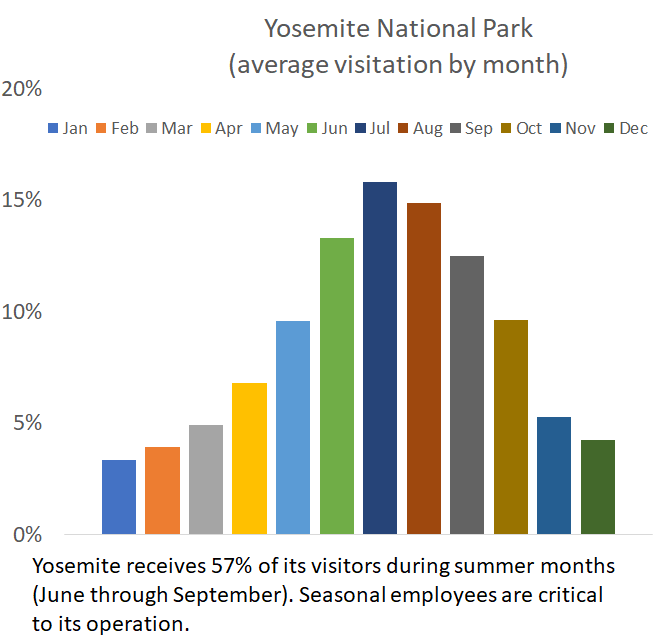
It’s essential to note that Yosemite, like many national parks is highly dependent on seasonal hires to manage summertime crowds. It simply cannot operate without them. Permanent and seasonal rangers are needed to manage traffic, to clean bathrooms, to protect meadows, ensure visitor safety etc. (Imagine, for example, 20,000 people in Yosemite on a summer’s day without functional restrooms!)
Moreover, there’s a human cost. Morale may be at an all time low in Yosemite. Restore Hetch Hetchy has been often critical of the National Park Service for neglecting the Hetch Hetchy area, but, as a whole, rangers are dedicated to protecting our precious parks so we can fully enjoy and appreciate them. Rangers need and deserve the respect of the public and our nation’s leaders alike.
We are all against waste. But DOGE cannot be permitted to take ignorant unilateral action from thousands of miles away without regard to what makes Yosemite one of America’s flagship national parks.
We hope and pray that cooler heads will prevail and will take the time to assess the effectiveness and utility of all government institutions. Yosemite and all our national parks belong to all Americans. We cannot allow them to be political pawns.
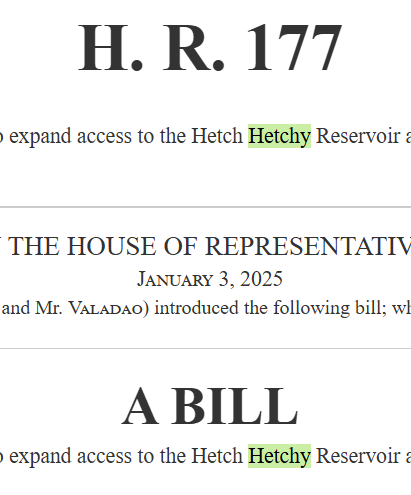
by Spreck | Feb 8, 2025 | Uncategorized
Restore Hetch Hetchy wrote to Congressman McClintock and his cosponsors last week, encouraging them to continue to pursue legislation to improve access and recreation at Hetch Hetchy. At the same time, McClintock added initial language to the Yosemite National Park Equal Access and Fairness Act (H.R. 177), the bill he introduced a month ago.

The current text of the bill is posted on Congress’ website.
Our letter, with its supporting documents, is posted on the Restore Hetch Hetchy website.
Discussion of this proposed legislation comes at a time when the National Park Service has decided to pause its plans to implement a long-term reservation system in the park while awaiting review by the new administration in Washington D.C.
We have asked the National Park Service to consider the Hetch Hetchy entrance to Yosemite differently from other park entrances in its reservations system. After all the Hetch Hetchy entrance is geographically separated from the others and has a different pattern of visitor use. Note also that the reservation system has never applied to park visitors who use public transportation, but that will not be an option for visitors to Hetch Hetchy – the only park entrance not served by the Yosemite Area Rapid Transit System.
Restore Hetch Hetchy remains focused on Hetch Hetchy, so we have not taken a position on the reservation system in other parts of Yosemite.
The National Park Service has long neglected the visitor experience at Hetch Hetchy. The National Park Service and/or Department of the Interior could and should make many proposed improvements without the need for legislation. A legislative solution, however, would be the best way to guarantee improvements for the long term.
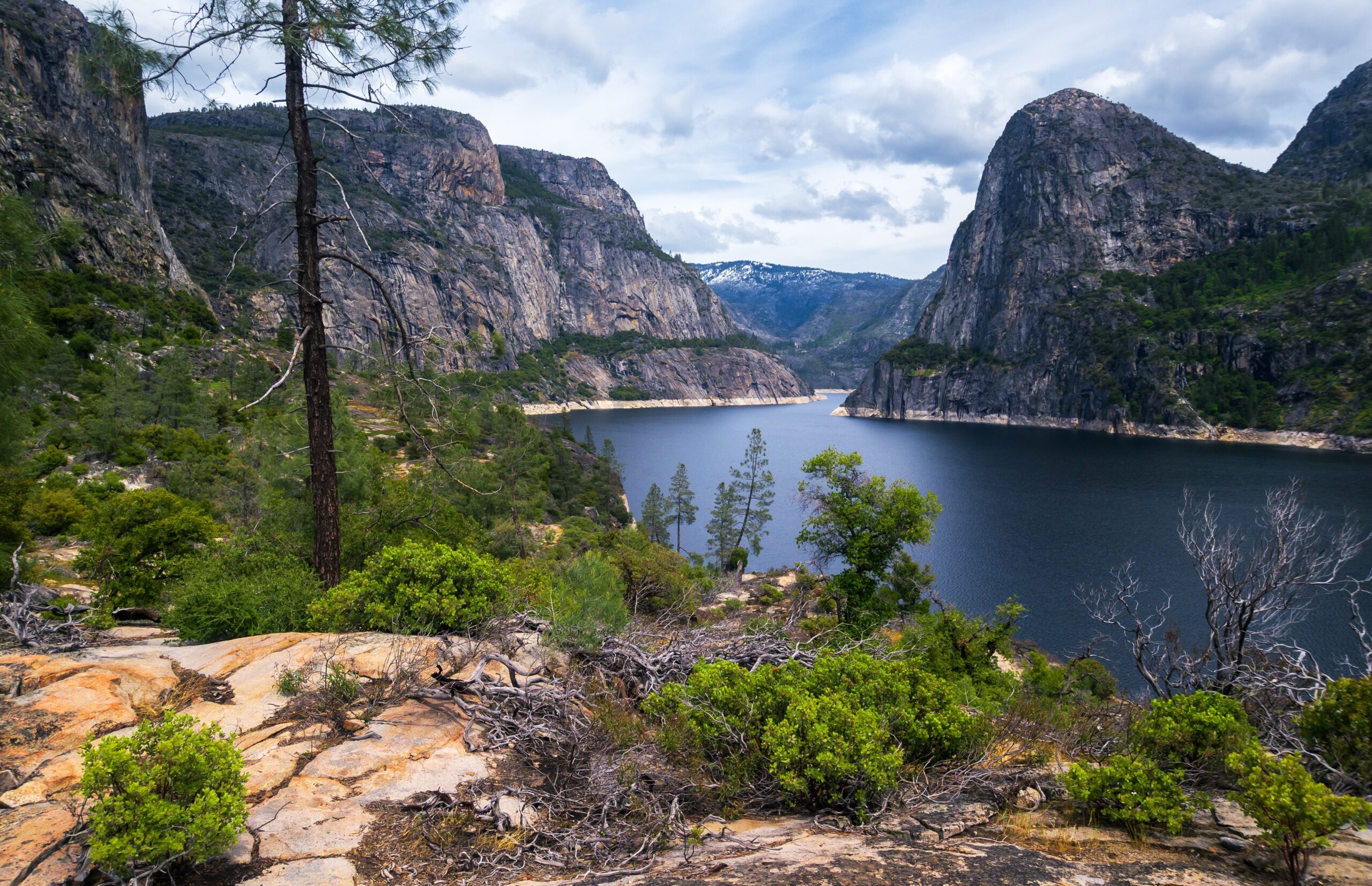
California has 38 reservoirs which hold more than 200,000 acre-feet of water. Of these, Hetch Hetchy Reservoir is the only one which does not allow boating and fishing. Photo: Joe Braun
So we are encouraging Congressman McClintock and others to pursue a legislative approach. The devil is in the details, of course, and legislation must protect the park and its wildlife as it makes additional recreational opportunities available for visitors.
Camping, boating and fishing etc. at Hetch Hetchy would all be popular activities. More visitors would come to Hetch Hetchy, marvel at its towering granite walls, learn its history and support the campaign for its restoration. So while restoration is our ultimate goal, we are also excited about improving access and recreation even while the dam is in place.
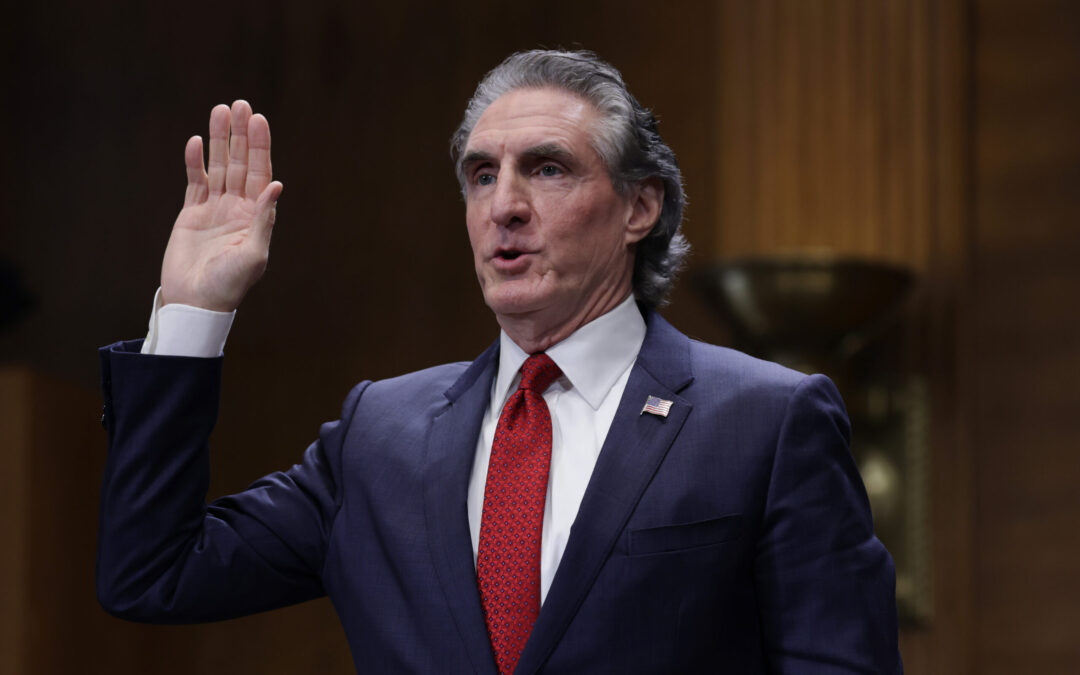
by Spreck | Feb 3, 2025 | Uncategorized
Leadership changes are afoot within the Department of Interior and the National Park Service. Staff at either agency has the ability to effect long overdue change at Hetch Hetchy under existing law, so we will be in touch with both during coming weeks and months.
Former North Dakota Governor Doug Burgum was confirmed as Secretary of Interior last Thursday with 79 out of 100 votes in the Senate.
The Department of Interior oversees numerous agencies, including the National Park Service. Burgum’s confirmation hearing focused primarily on his support for energy development on public lands with scant mention of of national parks. We have written Burgum, as we have previous Secretaries, explaining the important opportunity that we have to improve the visitor experience at Hetch Hetchy. We hope Burgum and/or his deputies will be interested.
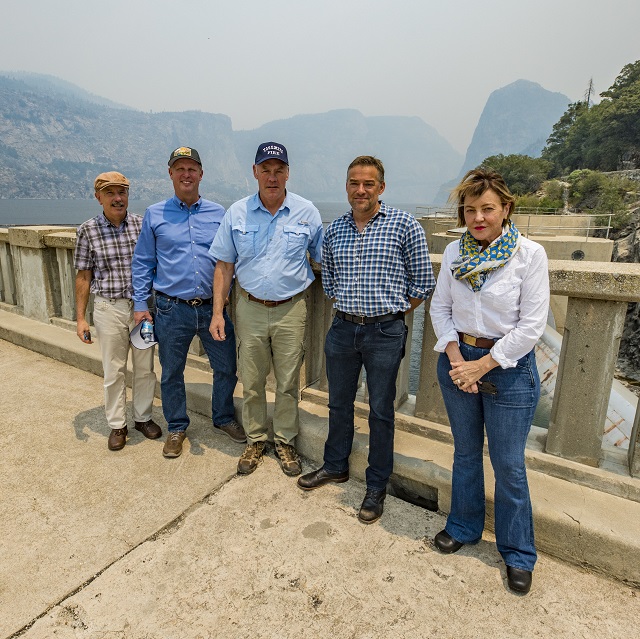
Secretary Ryan Zinke (center) came to Hetch Hetchy on a smoky day in 2018, and met with Restore Hetch Hetchy Board Member Mark Palley (left), ED Spreck Rosekrans, and Board Members Mark Cederborg (second from right) and Virginia Johannessen. Photos by Sherman Hogue/DOI
As is customary after a change of the Presidency, National Park Service Director Chuck Sams has resigned. The role is currently filled by “acting” Director Jessica Bowron. (The NPS Director is a position that also requires Senate confirmation, which never occurred direct Trump’s first presidency. The last president to retain a NPS Director for a full term was Richard Nixon).
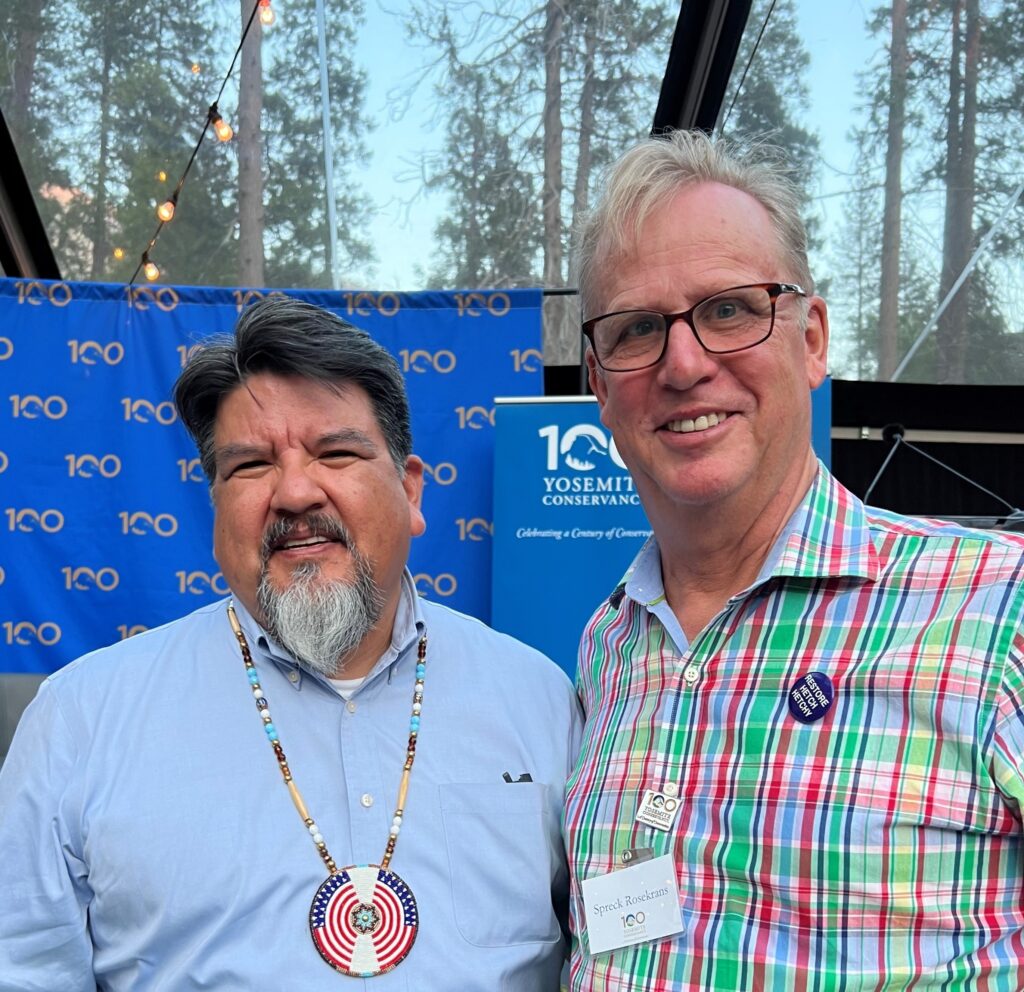
NPS Director Chuck Sams with RHH’s Spreck Rosekrans in 2023 at the Yosemite Conservancy’s Centennial soiree.
In addition, Yosemite Superintendent Cicely Muldoon has announced her retirement. We have had several cordial meetings with Muldoon and other Yosemite staff over the last several years. We have made progress convincing staff at Yosemite to enhance access to Hetch Hetchy, but much more needs to be done. We look forward to meeting and working with Muldoon’s not-yet-named successor.
Much can be done administratively to improve access and recreation at Hetch Hetchy. We will work with personnel at all levels to achieve improvements for park visitors that are long overdue. We will keep you posted.















